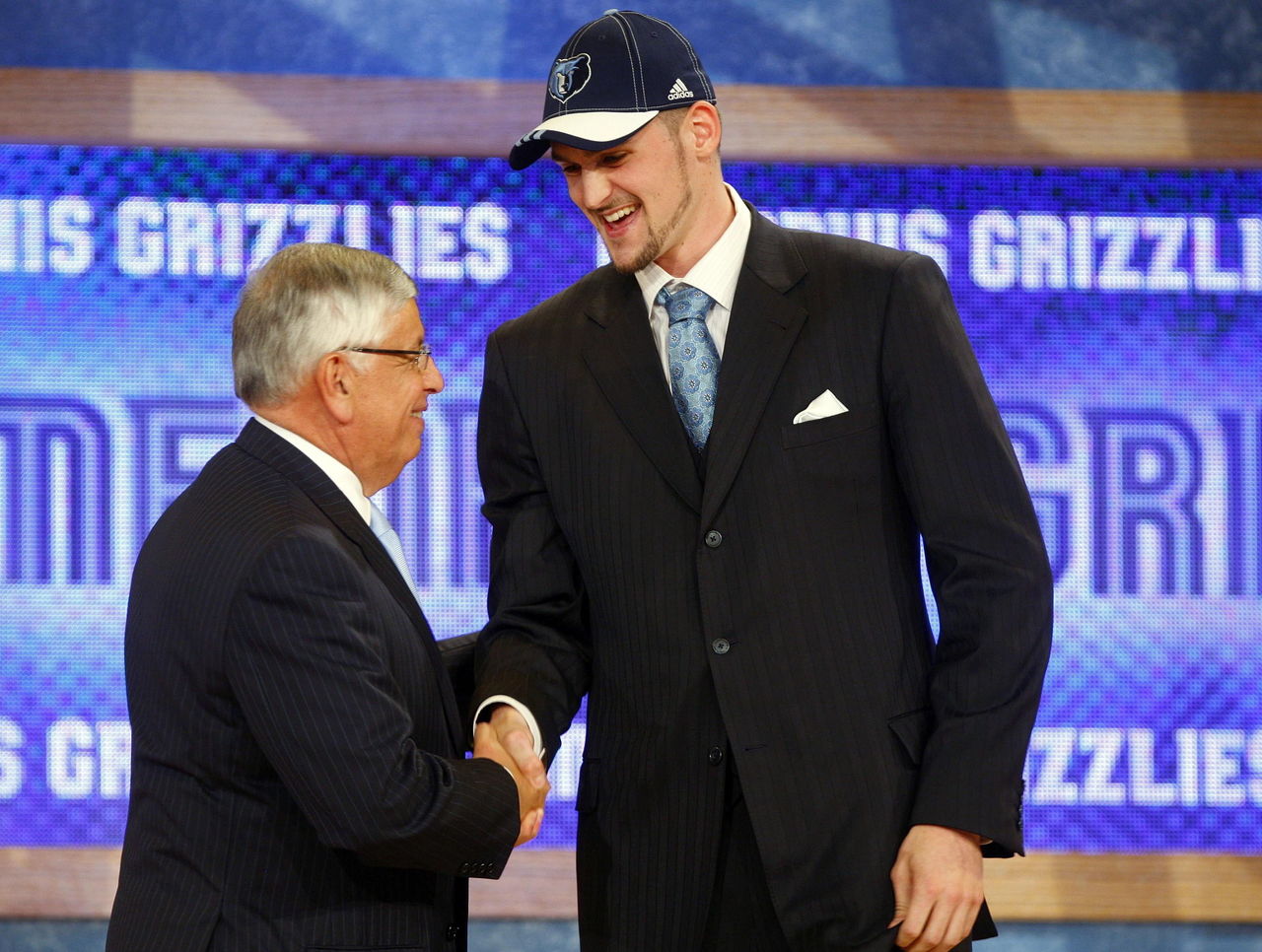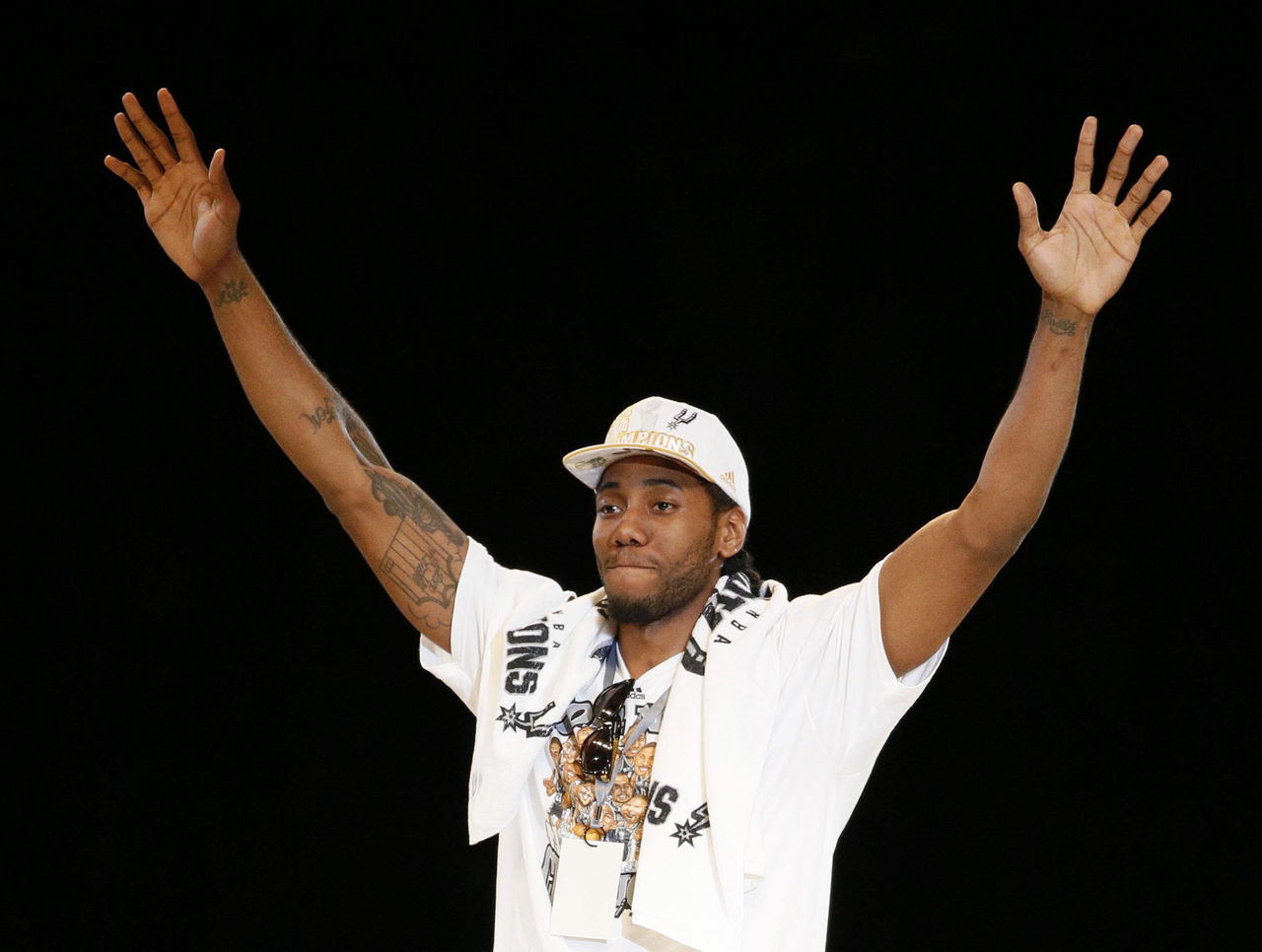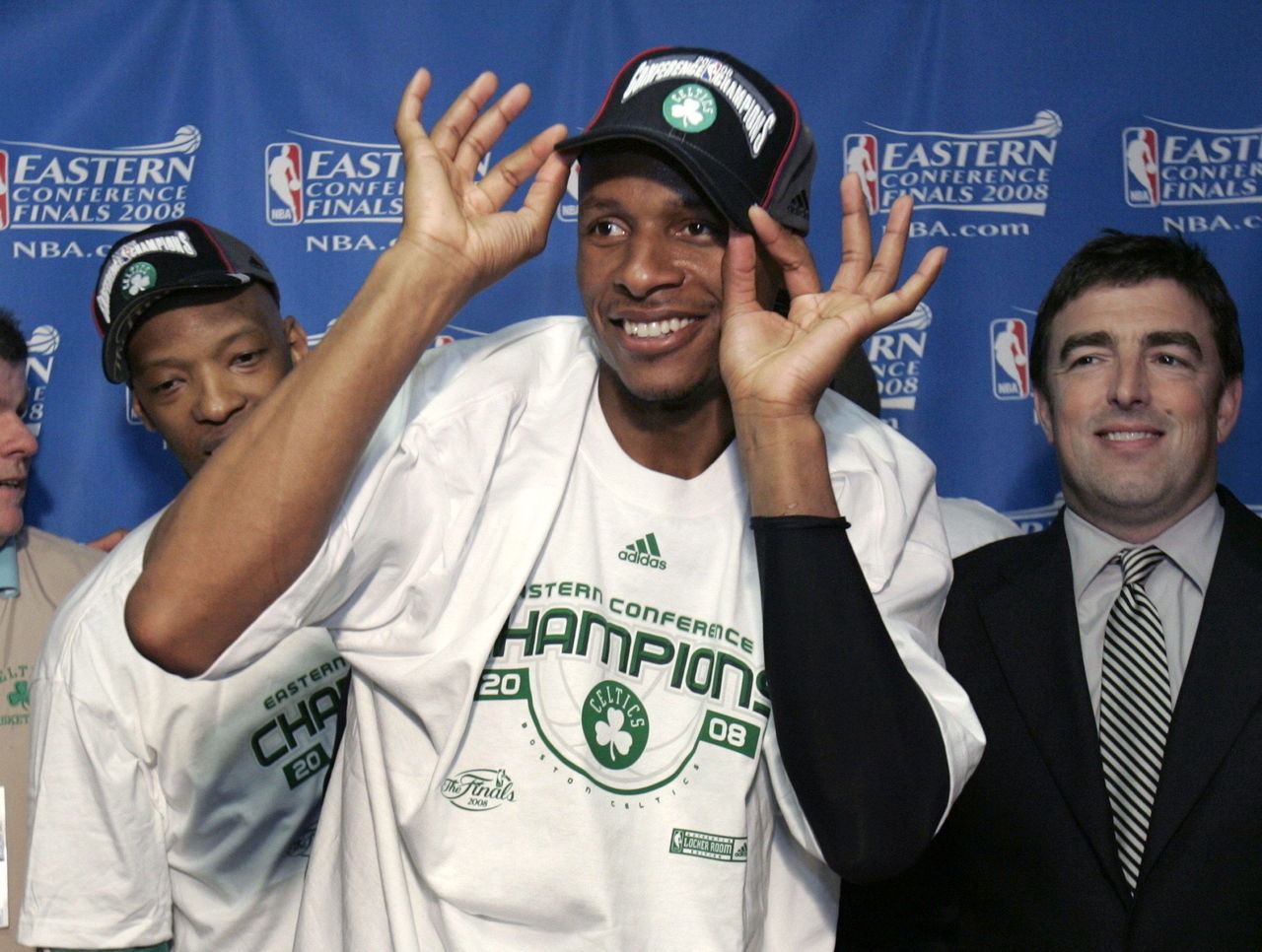The 5 biggest draft-day trades of the past 10 years
Last year on draft night, the New Orleans Pelicans made waves by shipping the No. 6 pick, Nerlens Noel, along with their 2014 first-round pick to the Philadelphia 76ers for Jrue Holiday.
That type of pick-for-established player deal isn't all that rare, but Noel was the highest pick that had changed hands on draft night since 2008. It now seems likely that the Pellies and Noel were just preparing us for the 2014 draft, for which every pick imaginable seems to be in play.
How many deals should we expect? If recent history is any indication, double digits are a near-certainty:
| Year | # Trades | Highest Pick Traded |
|---|---|---|
| 2013 | 15 | 6 |
| 2012 | 6 | 17 |
| 2011 | 12 | 7 |
| 2010 | 12 | 11 |
| 2009 | 12 | 18 |
| 2008 | 13 | 3 |
| 2007 | 11 | 5 |
| 2006 | 14 | 2 |
| 2005 | 5 | 21 |
| 2004 | 7 | 5 |
More important is whether these trades will have an impact. Draft day trades tend to resonate around the league for years, as these five draft-day deals from the past decade remind us.
Honorable Mention - Don't Sell Your Picks
The Phoenix Suns and cheapskate owner Robert Sarver should really have their own category - the Suns traded the No. 7 pick in 2004 for a future first and did the same with the No. 21 pick in 2006. Those picks, dealt to save money in the short-term, turned into Luol Deng and Rajon Rondo, while the returns turned into Nate Robinson and Rudy Fernandez.
Two other names stand out from similar trades - the Oklahoma City Thunder dealt the No. 18 pick in 2010 (Eric Bledsoe) for a future first (Fab Melo), and the Minnesota Timberwolves traded the No. 18 pick in 2009 (Ty Lawson) for a future first (Luke Babbitt). The future, it is not always brighter.
2008 - Love-for-Mayo swap shapes Wolves future

O.J. Mayo put on a Minnesota Timberwolves cap as the No. 3 pick in the 2008 draft, but he'd soon swap it with Kevin Love (No. 5) for a Memphis Grizzlies one. Mayo had been dealt with Greg Buckner, Antoine Walker and Marko Jaric for Love, Brian Cardinal, Jason Collins and Mike Miller.
We'd go further into the specifics here, but theScore's Andrew Unterberger did a great job exploring the impact of this trade at a much deeper level on Thursday.
2006 - Roy-for-Foye as neat as it sounds
For a while, the 2006 draft-day trade between Portland and Minnesota looked like a bad one for the Wolves. Portland convinced the Wolves to swap Randy Foye (the No.7 pick), who the Blazers had just acquired from Boston with Dan Dickau and Raef LaFrentz for Theo Ratliff, Sebastian Telfair and a future second-rounder (Trent Plaisted), in exchange for Brandon Roy (the No. 6 pick).
Through the 2009-10 season, this looked like a franchise-maker for Portland:
| Roy | Through 2009-10 | Foye |
|---|---|---|
| 274 | Games | 261 |
| 20.2 | PPG | 12.2 |
| 4.6 | RPG | 2.6 |
| 5.0 | APG | 3.6 |
| 1.1 | SPG | 0.7 |
| 35.4 | Win Shares | 8.7 |
| 9 | Playoff Games | 0 |
From there, however, Roy's knees deteriorated and he was reduced to a part-time player and eventually retired due to injuries. Foye, meanwhile, remains a capable reserve guard, and the Timberwolves used him in a trade in 2009 to land Ricky Rubio.
2006 - Don't feel bad for Portland
That draft wasn't all bad news for Portland, however (in reality, Roy was a great get for four seasons). Before they swooped in to steal Roy, they had made another huge draft-day deal courtesy of the Chicago Bulls.
That trade saw the Blazers deal the No. 4 pick, Tyrus Thomas, along with Victor Khryapa to the Bulls for the No. 2 pick (LaMarcus Aldridge) and a 2007 second-round pick (Demetris Nichols).
Khryapa was out of the league two seasons later, Thomas never realized his potential, though he seemed on his way to doing so before injuries slowed that process down, and Aldridge remains the Blazers' franchise player.
| Aldridge | From 2006 | Thomas + Khryapa |
|---|---|---|
| 577 | Games | 442 |
| 3 | All-Star Games | 0 |
| 29 | Playoff Games | 21 |
| 18.9 | PPG | 7.2 |
| 8.2 | RPG | 4.6 |
| 1.0 | BPG | 1.2 |
2011 - Kawhi would you do that?

You've probably heard about this one recently, what with Kawhi Leonard winning the NBA Finals MVP this year and all. On draft night in 2011, the San Antonio Spurs knew they wanted Leonard, and when he slipped into an area they could acquire a pick in, they didn't hesitate to come correct with an offer.
For the the No. 15 pick that would become Leonard, along with Davis Bertans and Erazem Lorbek (real name, no gimmicks), the Spurs sent the Indiana Pacers George Hill. Hill, then a promising 24-year-old point guard coming off a second consecutive season as a key contributor on a strong San Antonio team, had impressed yet again in the playoffs and the Pacers saw their point guard of the future.
Fast forward three seasons and Hill is still a solid contributor, though a below-average starting point guard and one who is entering year three of a five-year, $40 million contract. Leonard, still on his rookie deal, is the heir apparent to the Spurs dynasty.
2007 - The Big Three are born
Paul Pierce needed help. The Seattle SuperSonics were looking to rebuild a new core around Kevin Durant, who they had just taken second overall. It made the Celtics and Sonics perfect trade partners, what with Ray Allen deserving a chance for contention and the C's owning the No. 5 pick.
And so the Celtics sent that pick (Jeff Green) along with Wally Szczerbiak, Delonte West and a second-round pick (Trent Plaisted) to the Sonics for Allen and the pick that would become Glen "Big Baby" Davis.
Green would, for a time, make up a key piece of the Sonics-cum-Thunder core before being dealt back to Boston for Kendrick Perkins in 2011.
Meanwhile, later in the summer of 2007, the Celtics would deal Ryan Gomes, Gerald Green, Al Jefferson, Theo Ratliff, Sebastian Telfair, and two first-round picks (Wayne Ellington and Jonny Flynn) to the Timberwolves for Kevin Garnett, completing The Big Three.
And, well, how did it all turn out, Ray?
